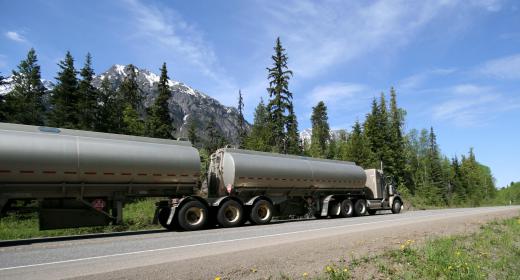Remediation equipment encompasses a wide variety of machinery used for the removal of contaminants from soil or groundwater. Types of remediation equipment include earth movers such as backhoes and bulldozers, trucks or railcars for transport, pumps for the movement of liquids, aeration and sparging machinery, filtration equipment, and combustion systems such as rotary kilns and infrared combustors. For large scale projects, several types of equipment may be used together.
In the case of soil contamination, it is sometimes necessary to move or remove a quantity of earth to accomplish remediation. Backhoes and bulldozers shift heavily contaminated material to a lined containment area so further leaching of the contaminants deeper into the ground is prevented. In certain instances, the decision is made to remove the contaminated soil and treat it off site. The excavating equipment is used to dig up the soil so it can be loaded into trucks or railcars for transport elsewhere.

For the remediation of a contaminated liquid, most often water, pumping is necessary to move the water into or through other treatment equipment or back into the ground or a storage tank. If the liquid is being taken off site for treatment, pumps are used to move it into tanker trucks or railcars for shipment. Many treatment methods rely on the exposure of contaminated groundwater to air, and pumps are also necessary to achieve this.

The introduction of forced air into soil or water can cause volatile pollutants to be released into the air. Spargers inject air bubbles into the lower levels of contaminated water or soil so the rising air can carry volatile compounds to the surface. Aeration, or air stripping, systems move contaminated water into towers or trays where it is spread out to expose as much of its surface area as possible to the air. Remediation equipment for air stripping may be designed as packed towers, spray units, and diffusers.
Particulate contaminants may be removed using filtration equipment. Using a porous medium or membrane, particles are trapped that cannot fit through the openings in the filter medium. The degree of filtration depends on the size of the particles that can pass through the filter medium or membrane.
Remediation equipment for combustion processes solids contaminated with volatile organic compounds such as petroleum products. A rotary kiln burns off volatile materials in a rotating cylinder equipped with an afterburner and a method for capture and cleansing of exhaust gases such as a bag house or scrubber. Infrared combustion is accomplished with electrically powered silicon carbide rods at very high temperatures. Contaminated materials move on a conveyor belt to pass through the radiant heat from the rods and burn off combustible constituents.
The remediation of a large site can take years and involve a variety of technologies. Some remediation equipment such as aerators and spargers work very gradually to clean polluted soil and water and may require multiple treatment cycles. Other options such as filtration and combustion are effective after only a single treatment, although they are not suitable for all pollutants.
